
We think of a winter wonderland as a landscape covered with snow, glazed and glistening, soft and serene. But for those of us who never receive snow’s purifying blanket, wonderland in winter is provided by the cold-weather hues of the conifers, the enduring, often colorful, leaves and bracts of broad-leaved evergreens and the ornamentation provided by berries, stems and seeds. Above, starting on the left, the Thuja occidentalis‘Rheingold’ (hardy to USDA Zone 3) wears an apricot winter coat (it’s yellow in the summer months), the Juniperus communis ‘Berkshire'(Zone 2) turns from blue-green to a rich plum color in the cold weather, the Cordyline banksii ‘Electric Flash’ (Zone 9), Pinus mugo ‘Pal Maleter’ (Zone 2), Leucadendron ‘Ebony’ (Zone 9), Loropetalum chinensis (Zone 7) and Cupressus macrocarpa ‘Greenstead Magnificent’ (Zone 7) are electric and magnificent all year-round. This rich horticultural tapestry is not difficult to achieve and creates a wonderland in the dead of winter.
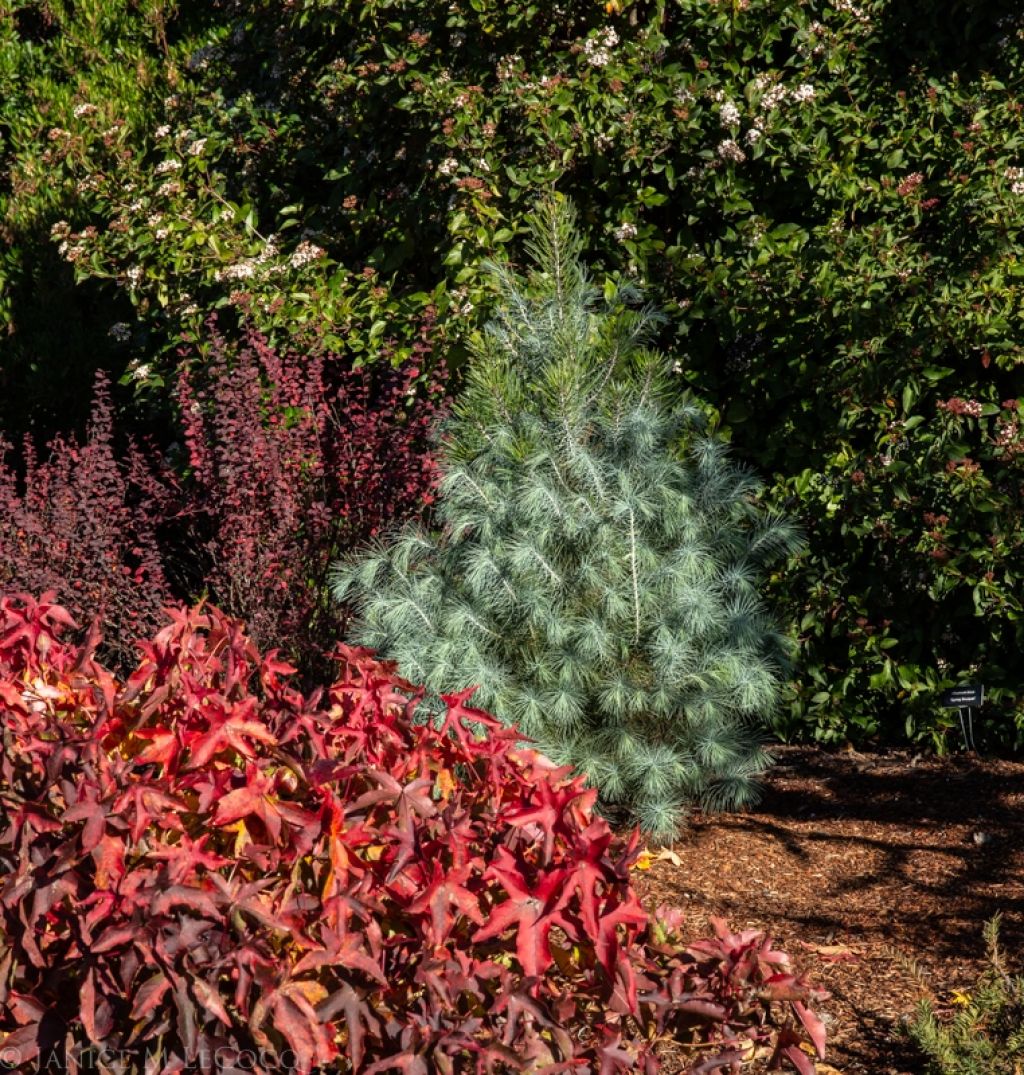
Some of the winter colors come from the deciduous trees that are late to turn and even later to drop their leaves. Both the barberry (Zone 5) and sweetgum (Zone 5) above hold their leaves well into December in this zone, and by planting them near a blue-needled conifer, in this case big-cone pinyon pine (Zone 9), we get the dramatic effect provided by complementary colors (color wheel-opposites).
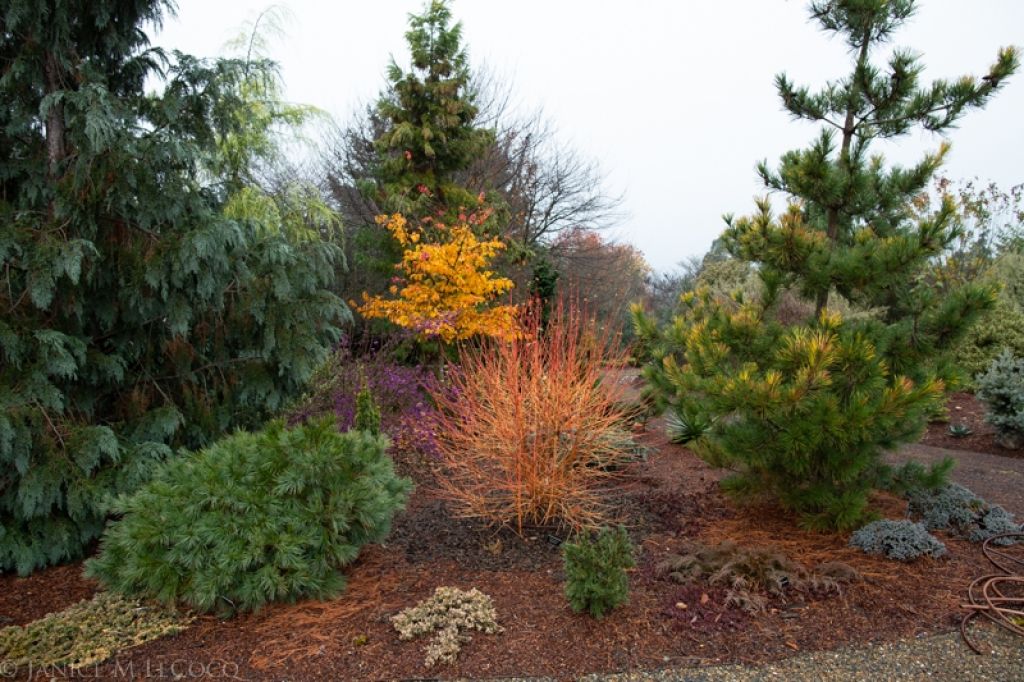
Abies pinsapo, Spanish fir, has many cultivars that are garden-worthy. ‘Horstmann’, (Zone 6) pictured above, is slow growing and diminutive relative to its wild parents. Its blue-green needles are lovely themselves, but its russet buds, which are carried through the dormant season, provide additional interest. Note the contrast in shapes and textures of the two plants, as well as the lively color combination.
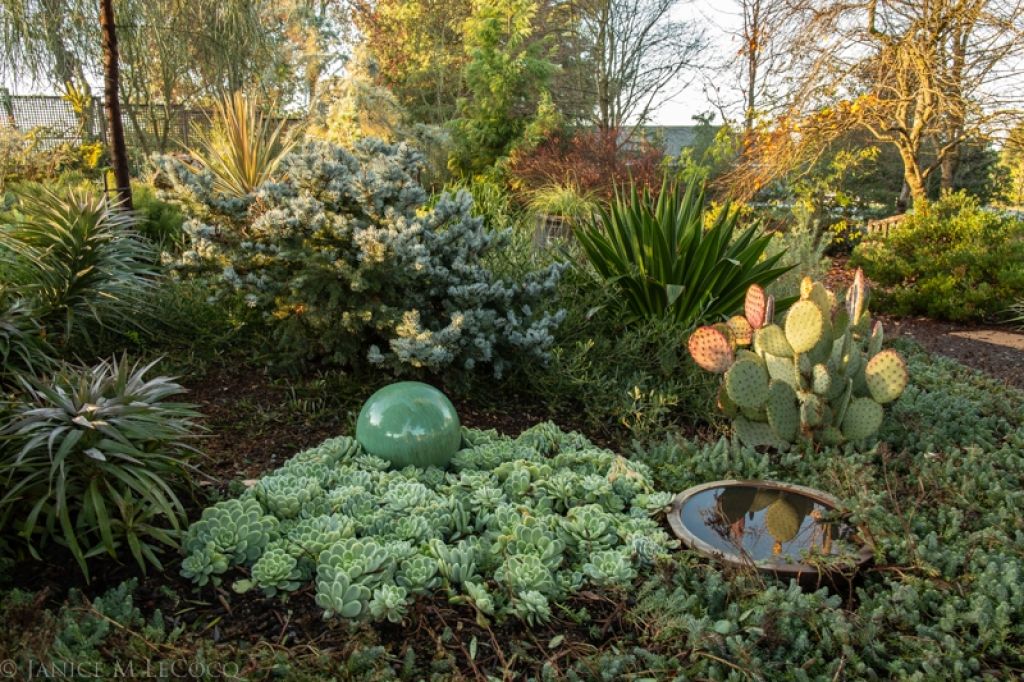
Weak winter sun creates pleasing shadows and highlights, unlike summer’s harsh overhead glare. The Monterey cypress cultivar on the left, ‘Greenstead Magnificent’ shows off its sea-green color and tweedy texture much better in winter than summer, and the Cordyline’s delicate straps are teased and separated by the weak light. Cold also brings out its pink highlights.
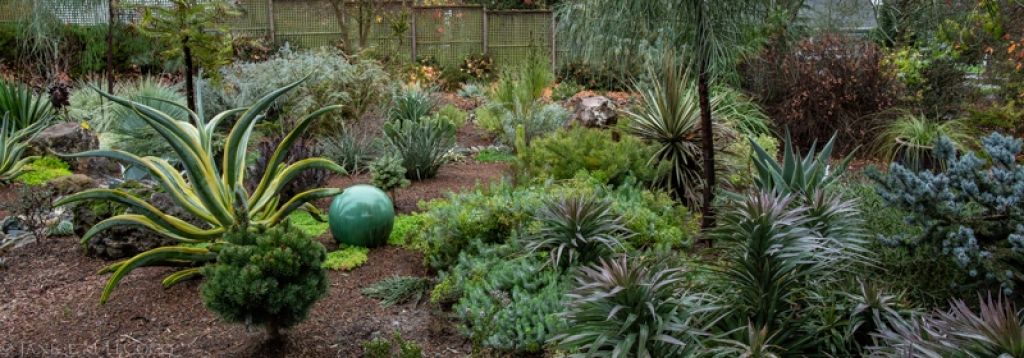
Some inanimate additions can pump up the color and texture, such as ceramics or water features. The celadon ball intensifies the Echeveria‘s (Zone 9) color and the water reflects the Opuntia santa-rita ‘Tubac’ (Zone 8) as it is touched by the morning sun.
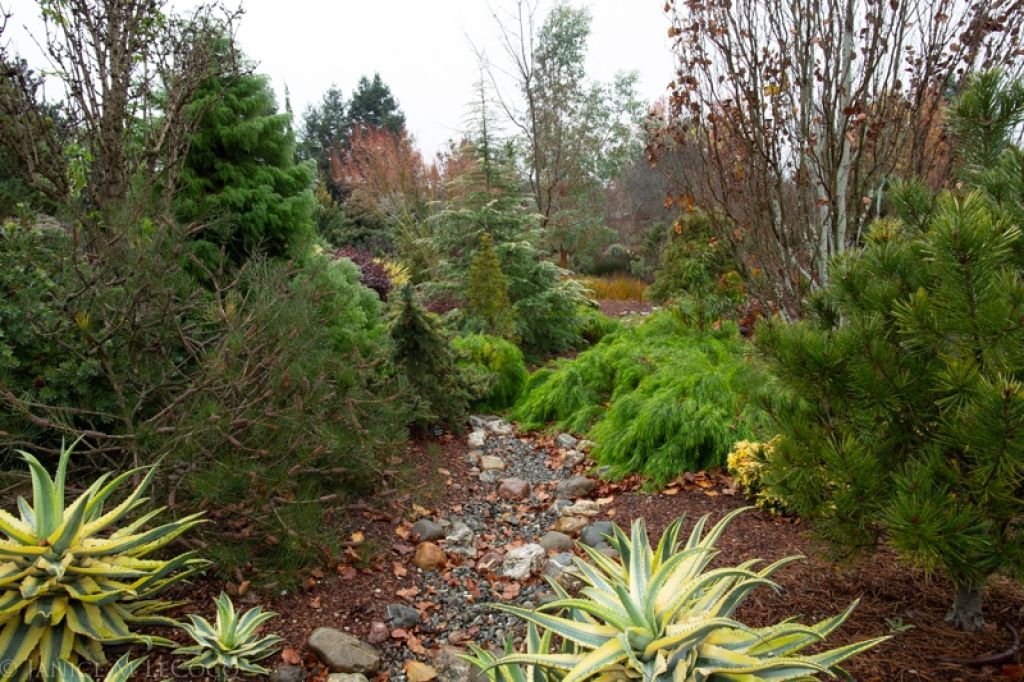
The glazed ball dominates the Echeveria, but when we step back we see it in context with the larger plants. It still provides textural and structural contrast, but the ‘Stained Glass’ octopus agave (Zone 9) and the clump of ‘Blue Boy’ yucca (Zone 7) are hard to compete with!
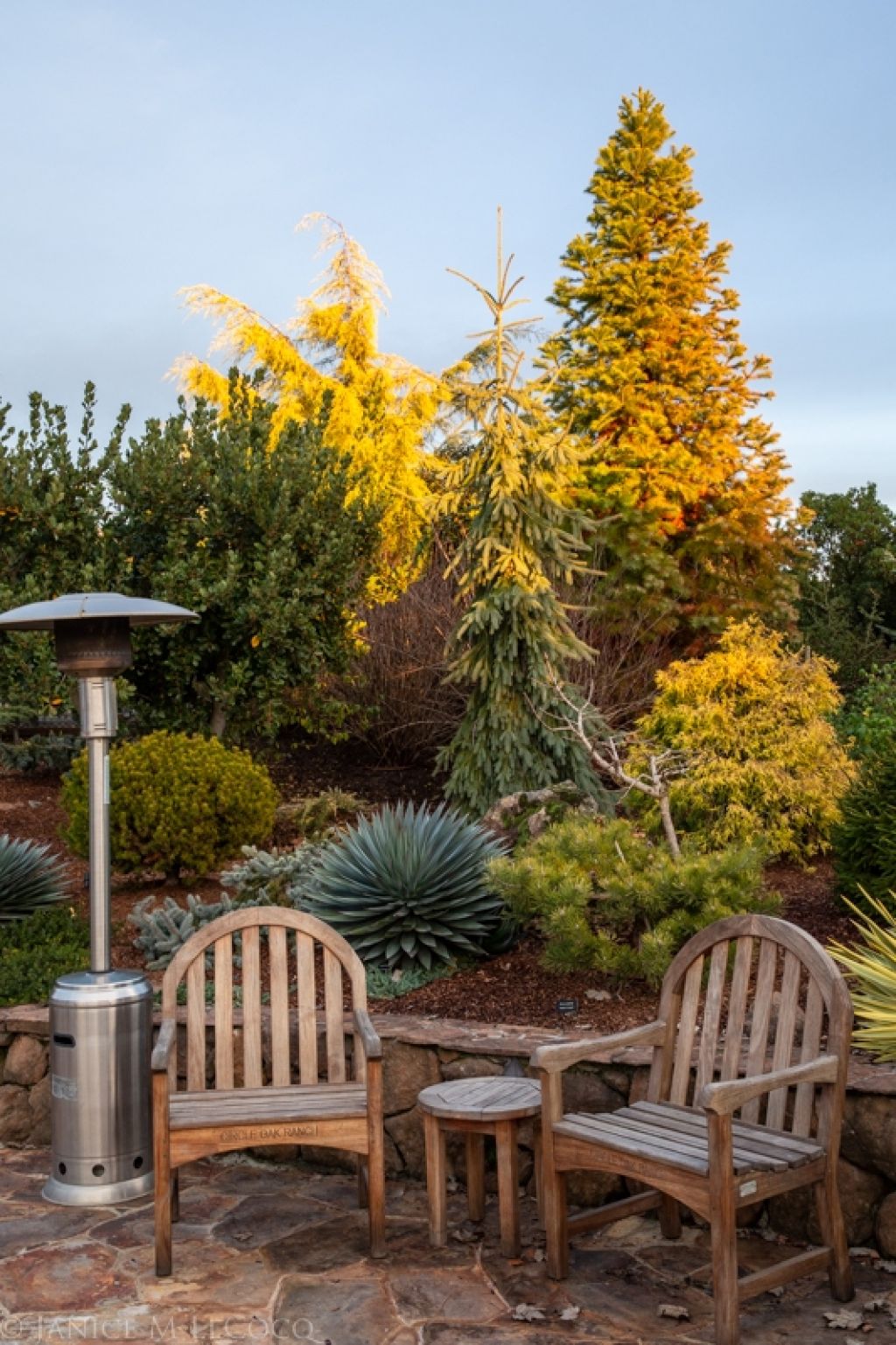
Although we’ve been focusing on other colors, brilliant green is just as dramatic in winter as purple or orange, especially when it is contrasted with yellow and gold, as in the above photo. Acacia Cousin Itt (Zone 9) is mouthwateringly verdant all year round, but we really appreciate it in winter’s soft light, especially when highlighted with nearby yellow foliage.
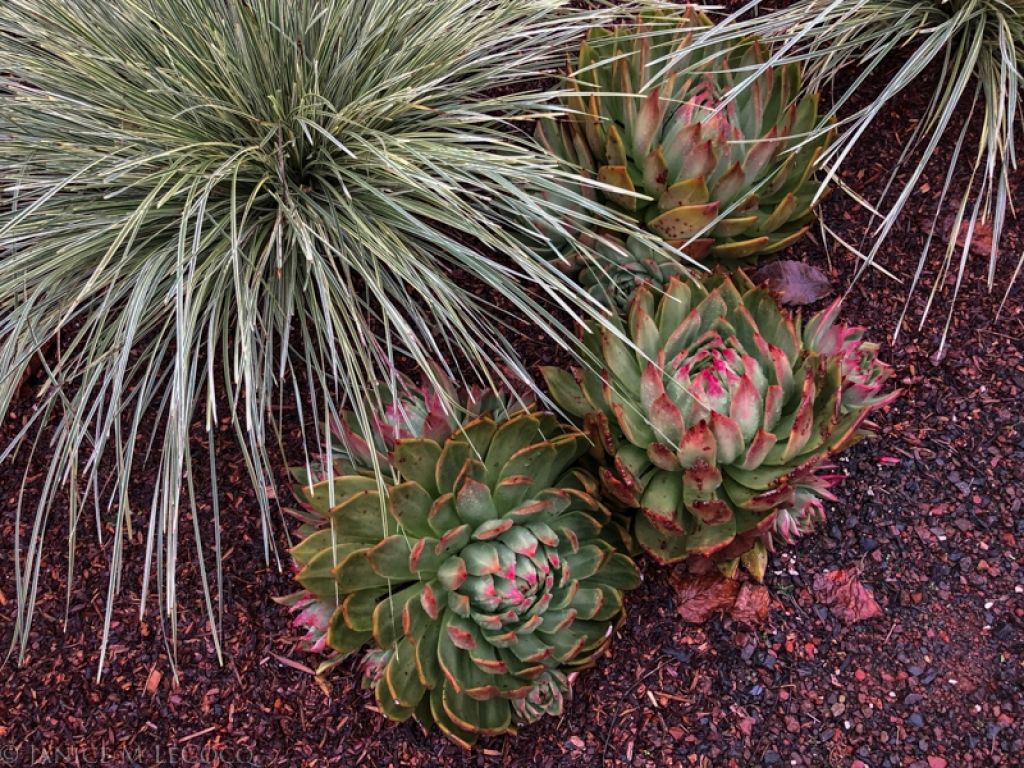
The yellow foliage, already a winter beacon, becomes downright fiery when hit by the late afternoon sun. Even the drabber colors, such as that of the tall Cunninghamia unicanaliculata (China fir, Zone 7) in the above photo, lights up like a torch.
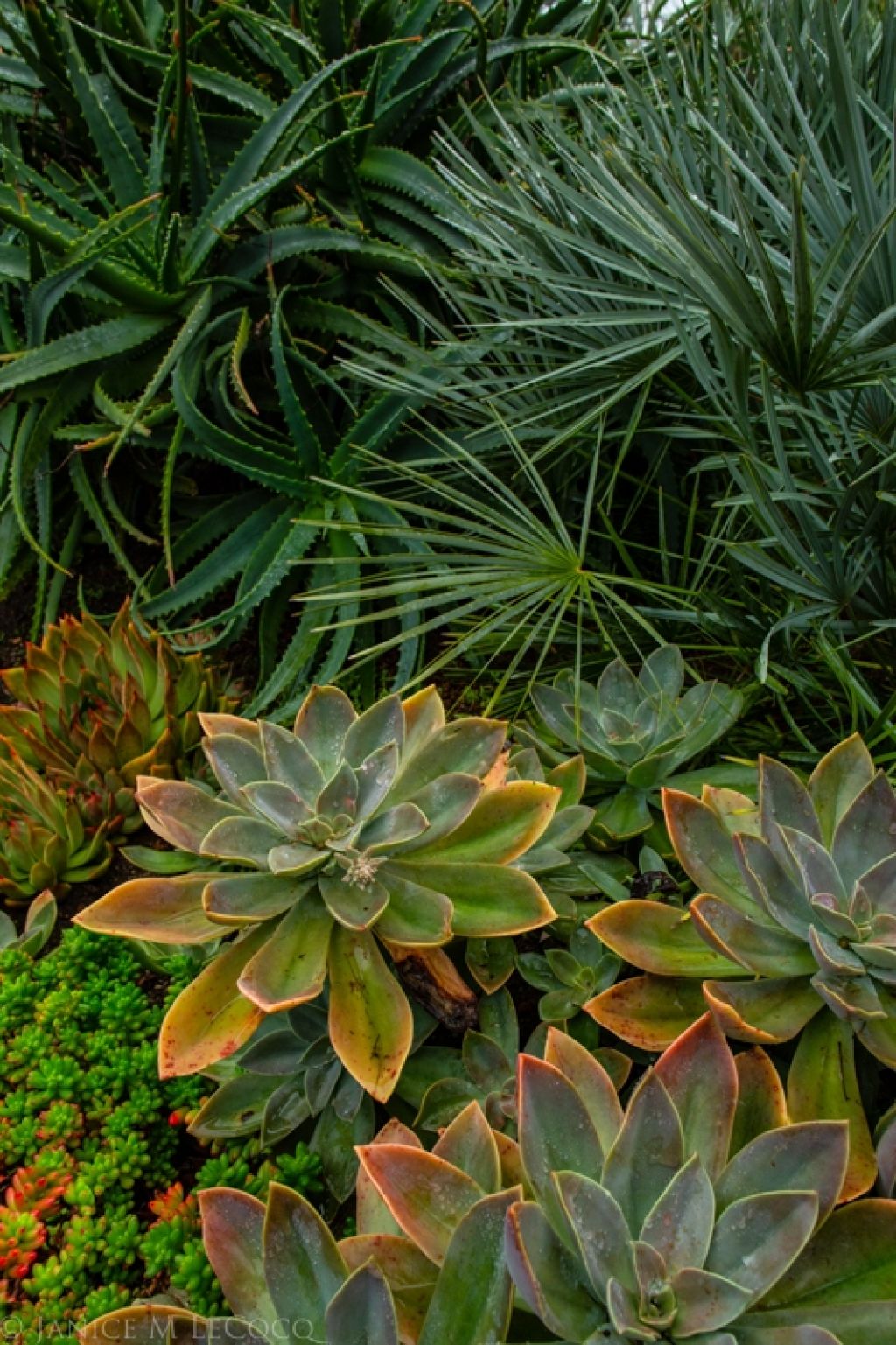
Like many conifers, a goodly number of succulents take on added hues in winter. The Echeveria agavoides‘Prolifera'(Zone 9) pictured above looks like it is wearing nail polish, but it’s just its response to colder weather. The Lomandra ‘Platinum Beauty’, (Zone 8) on the other hand, is always beautiful!
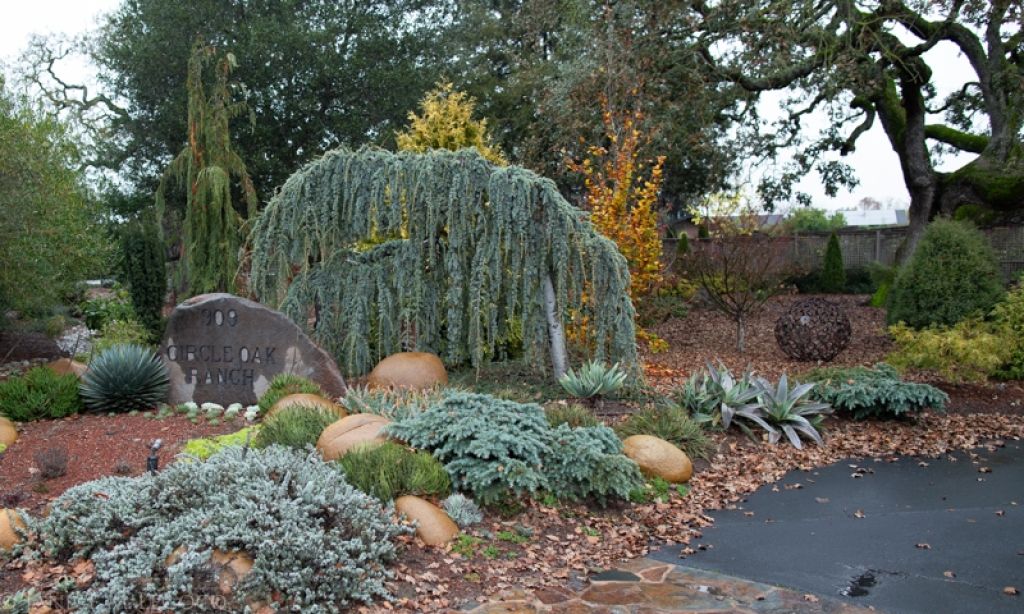
We also appreciate our workhorses: the plants that look lovely all year round, need little to no maintenance and don’t quickly outgrow their spaces, such as the Aloe arborescens, (zone 8), Chamerops humilus ‘Cerifera’ (zone 8), Graptoveria ‘Fred Ives’ (Zone 9) and Sedum rubrotinctum (Zone 9) pictured above. Cold weather doesn’t stop their display, rather, it adds more red highlights to the Sedum. Even if you are in a colder zone, you can plan for at least one part of your garden that looks good in all seasons.
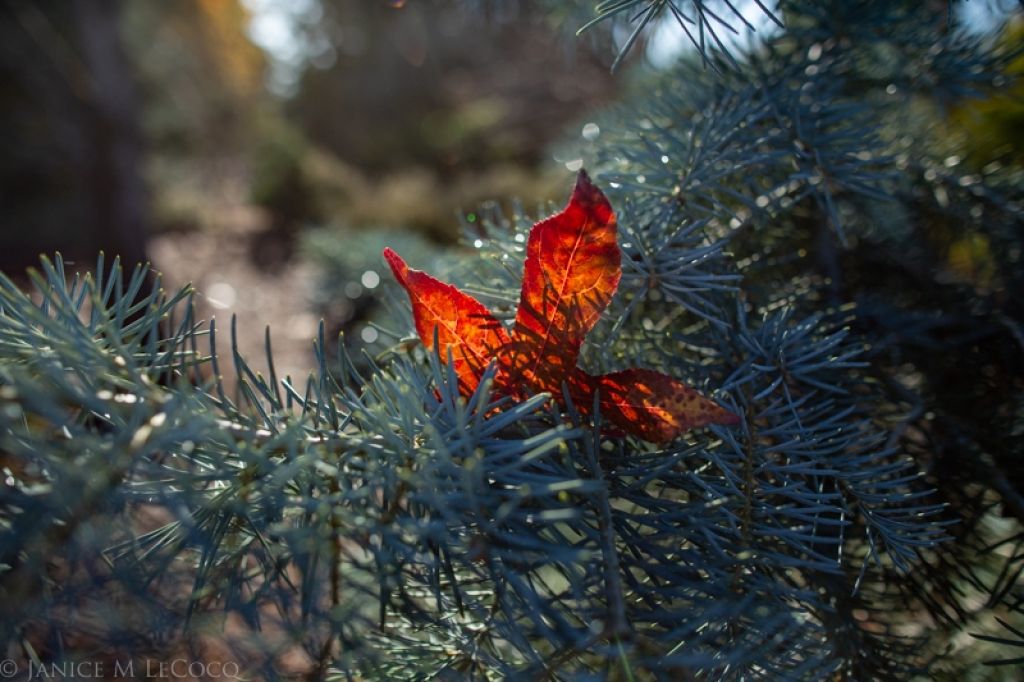
We tend to love the warm colors in winter but blue can be just as colorful and dramatic. The combination of Cedrus atlantica ‘Glauca Pendula’ (Zone 6) and Cedrus deodara ‘Prostrate Beauty’ (Zone 7), together with a variety of blue-foliaged succulents makes and icy display in front of the golden needles of Thuja occidentalis‘Malonyana’ (Zone 4) and the lingering leaves of Fagus sylvatica ‘Dawyk Gold’ (Zone 4).
But sometimes you go into the garden and find serendipitous color combinations, such as when the deep orange leaf of a Liquidambar dropped into the arms of an Abies concolor ‘Blue Cloak’ (Zone 3). Backlit by the weak winter sun, it is surely one of the season’s garden jewels.
A very happy new year from Form and Foliage